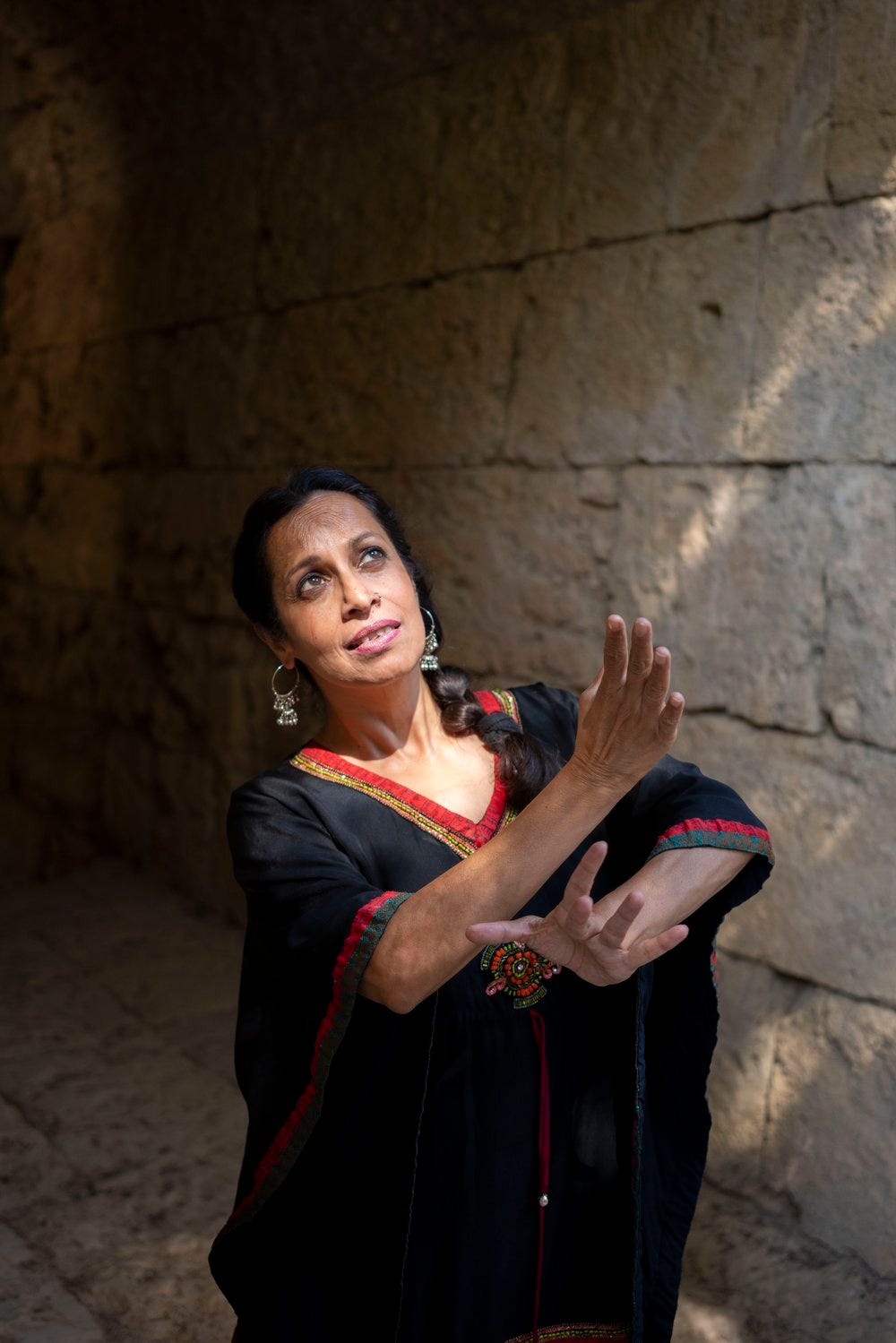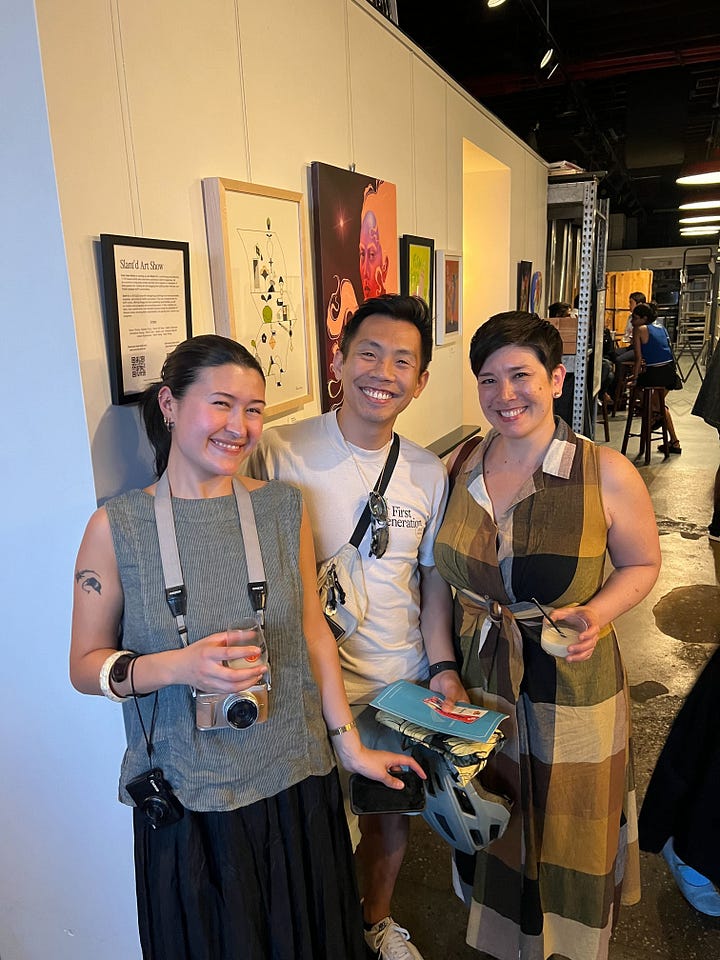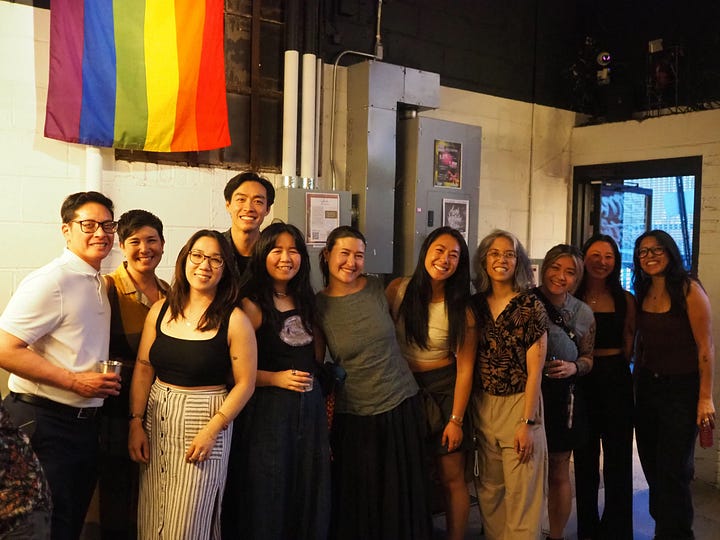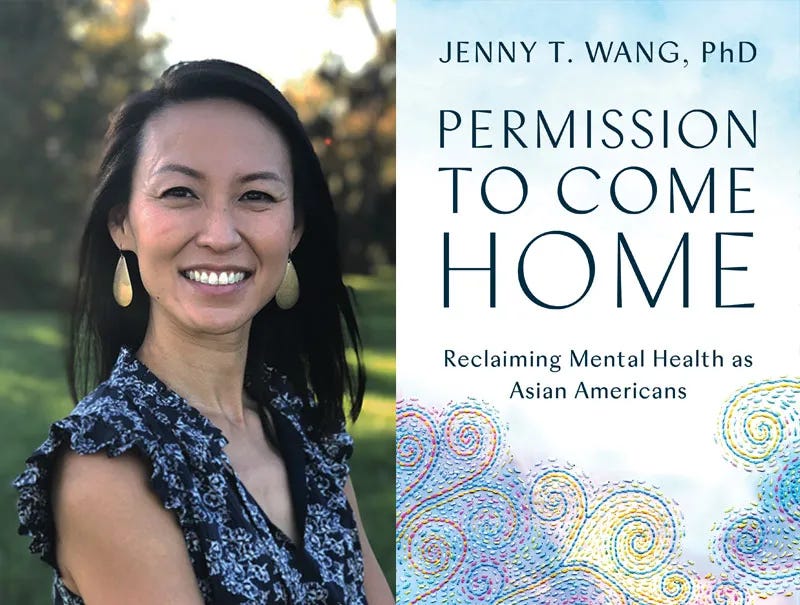As a mixed-race Asian American, I’ve often found myself searching for home—not just in places or communities, but within myself. The question of “where do I belong?” has echoed throughout my life, sometimes as a gentle curiosity, other times as a restless ache.
Art—whether in the form of stories, music, or movement—has always been my compass. It’s through creative expression that I’ve learned to honor the complexity of my heritage and the nuances of my mental health journey. Art gives us permission to feel deeply, to speak truths that words alone can’t hold, and to connect across the invisible threads of shared experience.
This month, The Unfolding is dedicated to exploring how Asian American artists, writers, and healers are shaping new narratives of identity and wellness. If you, too, are navigating questions of identity, or tending to your mental well-being, I hope you find comfort in knowing you are not alone. Our stories are powerful. When we share them, we create spaces for healing, for connection, and for belonging on our own terms.
Thank you for being part of this unfolding journey.
Amaris (Newsletter Editor)
Depression and the Art That Saved Me by Gary Yeh
In this personal essay, first published in Slant’d Issue 01: Beginnings, art collector Gary Yeh describes the origins of his popular Instagram page—and now a global media brand, @ArtDrunk. We hope this inspires you to “journal” in whatever form most connects you with your passions, too!
I was 14 when I first felt the urge to end my own life.
Most mornings, I would wake up feeling cold and unwanted. Even in the spring, when the dogwood tree outside my window blossomed, I struggled to find beauty in the world to motivate myself and get out of bed. Although there were spurts of happiness, my teenage years were haunted by the desire to call it quits. I struggled with my emotions, but more importantly, I struggled with why. Why did I feel those urges? Why was I unhappy? For years, I tried answering these questions and wondered if my parents’ rocky marriage or my failed two-week middle school relationship factored into my depression. As I entered high school, however, I began to realize that these contortions of the mind were rooted in an internal struggle with my race and identity.
I grew up in a predominantly white community, where I surrounded myself with white friends. I ignored our differences in race—and fundamentally our differences in culture—and I sacrificed an important part of myself to blend in among my peers. I ate different foods at home than I did at school. I was annoyed when my parents mispronounced basic English words, yet I would shamelessly laugh along when white students made mocking impersonations of other Asians. I wondered whether my true self was the person I was at home, the person I was at school—or neither.
Ruminating on art, however, gradually helped replace my existential anxieties with a renewed sense of wonder that there was, indeed, beauty in the world.
The art didn’t discriminate against me because of my race. The art didn’t encourage me to hide my true self. What I felt standing in front of those monochromes was a momentary feeling of freedom: the freedom to be whoever I wanted to be and to express whatever emotions I wanted to express.
Since starting @ArtDrunk, I have always been most excited by comments from strangers reflecting on how I helped them see art from a new perspective. People connected with my interpretations of art—interpretations that were rooted in my own emotional responses—and it was immense validation for pursuing what I love. While some may journal with words, I use Instagram to journal with art; it captures my travels to art fairs and even the unaffordable artworks I dream of one day collecting, all of which serve to express who I am.
Upgrade your subscription to read the rest of Gary’s story or other stories in Slant’d Issue 01: Beginnings (all paid subscribers get access to our magazine archives!).
Meet Writer, Performance Artist and Facilitator of Creativity Workshops: Shebana Coelho!

Can you describe your heritage?
I was born in India to a Muslim mother and a Catholic father. We moved to the US when I was twelve. English is my first language because I come from a class of Indians specifically created as part of British education policy to be “Indian in blood/colour but English in intellect/morals.” I’m 52 and I’ve been an independent creative artist since my twenties.
How have your art and travels influenced your healing journey?
My quest to understand myself took me to remote landscapes like Mongolia—being in wild nature healed something elemental, gave me the strength to follow my passion to perform and delve deeper into colonization and its insidious ripple effects.
It led me to understand that “Faraway is Close,” a term that defines all my work. That creativity which we feel is so remote, that culture/person which we think is so incomprehensible—they are closer than we think.
I believe self-expression leads to community healing. By going on an individual healing journey to mend what felt broken and out of balance in me, I readied myself to be of service to community with my unique gifts.
What inspired you to start creativity workshops?
I started these workshops because it dovetails with my journey as someone who was afraid to speak and be seen. What changed was when I wrote a poem about inviting fear in for tea.
This expanded into my solo play, the good manners of colonized subjects, about the ripple effect of historical and cultural colonizations, art, fear. The play took me all over the world and transformed my deepest fear (being seen on stage) into my deepest passion (being seen on stage).
I facilitate a series of workshops called Your Voice is Catalyst, which is all about excavating what keeps you silent and what wants to be expressed.
What message do you hope to share with the world through your work?
What I want to share with everybody is the beauty of the most unexpected things happening when you follow what calls.
Want to submit your art, recommendations, or be interviewed? Email me or nominate yourself or your friends for an upcoming feature!
🖼️ Slant’d Art Show: Meet the Artists Art Fair (May 25)
ICYMI: Slant’d is hosting its first ever art show featuring 11 artists from our literary magazine. Don’t miss our Meet the Artists Fair on May 25, from 2-6PM, part of this year’s inaugural New York Asian Arts Festival (NYAAF) by Akin!
Come meet Slant’d artists Yayun Chang, Jason Lam, Vanessa Nguyễn, Liliana Rasmussen, Mark Wang, and Rose Wong, enjoy sake from Kato Sake Works, and onigiri from @onigirinoah!
The Slant’d Art Show will run until June 1 at Kato Sake Works. Follow Akin for the full NYAAF lineup and subscribe to their creativity digest.




🌸 What to Read this May
Jenny T. Wang is a Taiwanese American clinical psychologist, author, and national speaker renowned for her advocacy in Asian American mental health and racial trauma. She is the founder of the @asiansformentalhealth community and the Asians for Mental Health therapist directory, both dedicated to destigmatizing mental health and improving access to culturally competent care for Asian diaspora communities.
Her book, Permission to Come Home: Reclaiming Mental Health as Asian Americans, invites all AAPIs to honor our feelings, to question internalized messages about worth and success, and, most importantly, to grant ourselves the permission to come home—to our bodies, our stories, and our authentic selves.
🐚 An Audio Prompt to Spark Your Creativity
Creativity is the sea is a guided meditation series created by Shebana Coelho. Experience the first mesmerizing episode here: The Journey Begins.











